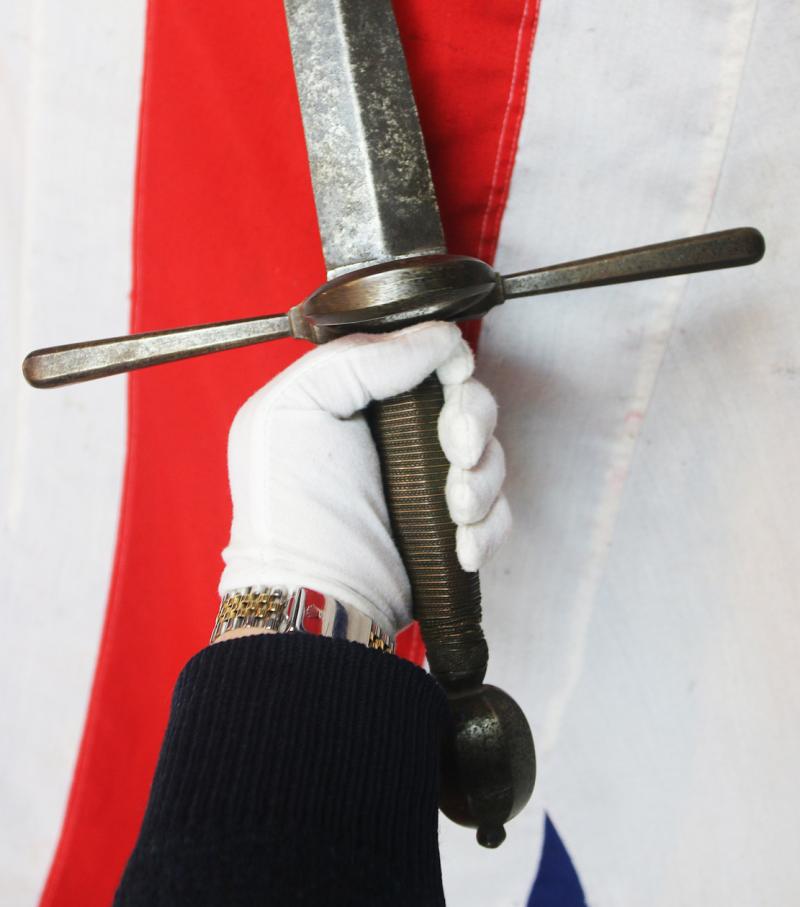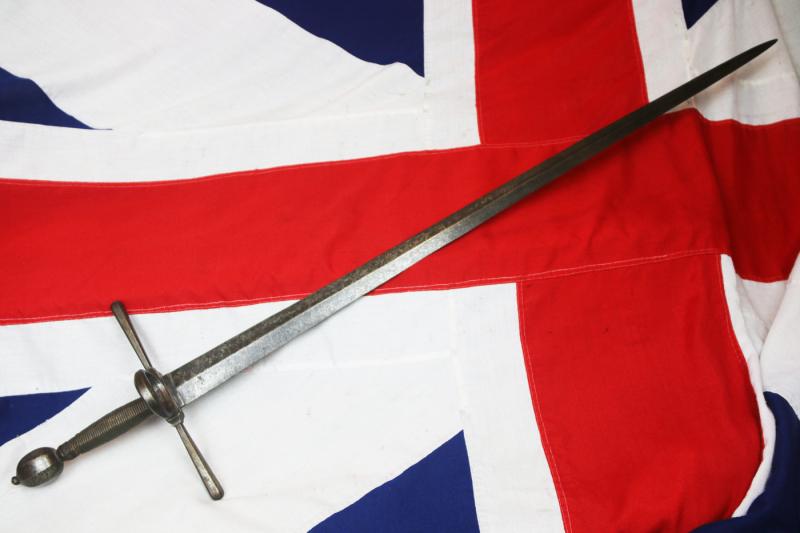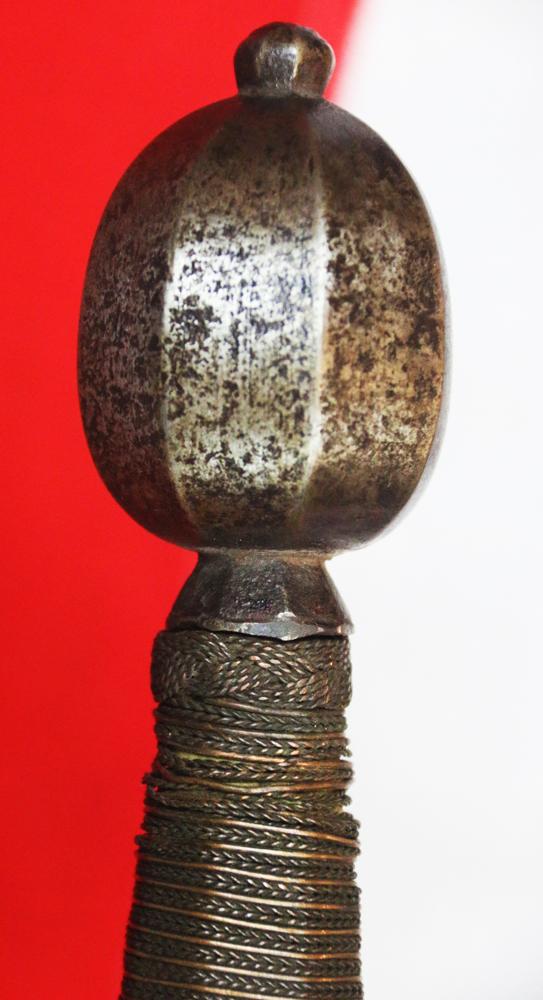A Very Fine & Beautiful, Antique, Likely German, 16th-17th Century 'Longsword' Style, With Double Edged Graduating Diamond Shaped Blade, Bearing Armourers Mark The Hilt's Crossguard Designed With Single Oval Side Ring
The longsword might have had longer blades than the arming sword, also called the knightly sword which was designed purely for single-handed use, but not necessarily. The difference was the longsword’s longer grip that allowed hand-and-a-half or two-handed use. However, these swords were generally shorter than the German two-hander or zweihander, which was not light enough for single-handed use.
For hilt type see; hilt 10, page 72, A.B.V Norman around 1510 to 1650, The Rapier and Small Sword 1460-1820
Blade Type, Ewart Oakshott XVIIIb and XVIIIc that represent the later longswords of the mid-15th to early 16th centuries. They have a flattened diamond cross-section, often with pronounced mid-rib, some being hollow-ground.
Combining an Oakshott type XVIiic, with the shorter than usual AVB Norman hilt type 10 indicates a hybrid form with the blade of a more usual two handed sword, and the more practical hilt of the shorter bastard style. A most impressive long sword ideal for sword combat competition in many ways.
107 cm blade, cm hilt and 19cm grip
The German school of fencing (Deutsche Schule; Kunst des Fechtensa) is a system of combat taught in the Holy Roman Empire during the Late Medieval, German Renaissance, and early modern periods. It is described in the contemporary Fechtbücher ("fencing books") written at the time. The geographical center of this tradition was in what is now Southern Germany including Augsburg, Frankfurt, and Nuremberg. During the period in which it was taught, it was known as the Kunst des Fechtens, or the "Art of Fighting".b The German school of fencing focuses primarily on the use of the two-handed longsword; it also describes the use of many other weapons, including polearms, medieval daggers, messers (with or without a buckler), and the staff, as well as describing mounted combat and unarmed grappling (ringen).
Most authors of writings on the system are, or claim to be, in the tradition of the 14th-century master Johannes Liechtenauer. The earliest surviving treatise on Liechtenauer's system is a manuscript dated to possibly the late 14th, or early 15th century, known as Ms. 3227a. More manuscripts survive from the 15th century, and during the 16th century the system was also presented in print, most notably by Joachim Meyer in 1570.
The German tradition was largely eclipsed by the Italian school of rapier fencing by the early 17th century. Practitioners of the German school persisted at least until the end of the 18th century, though.
The "longsword" type exists in a morphological continuum with the medieval knightly sword and the Renaissance-era Zweihänder. It was prevalent during the late medieval and Renaissance periods (approximately 1350 to 1550), with early and late use reaching into the 12th and 17th centuries.
Code: 25226
6750.00 GBP








